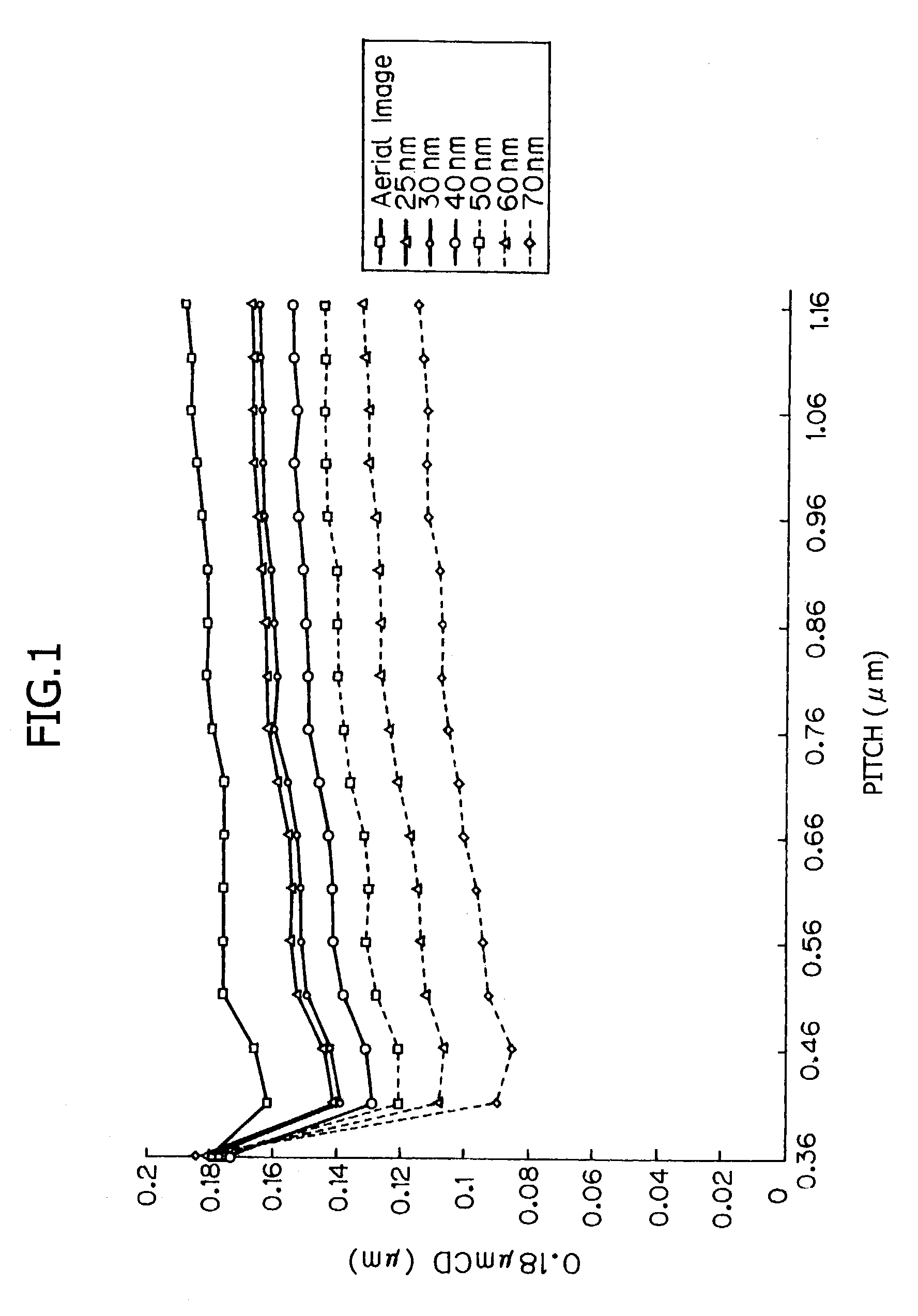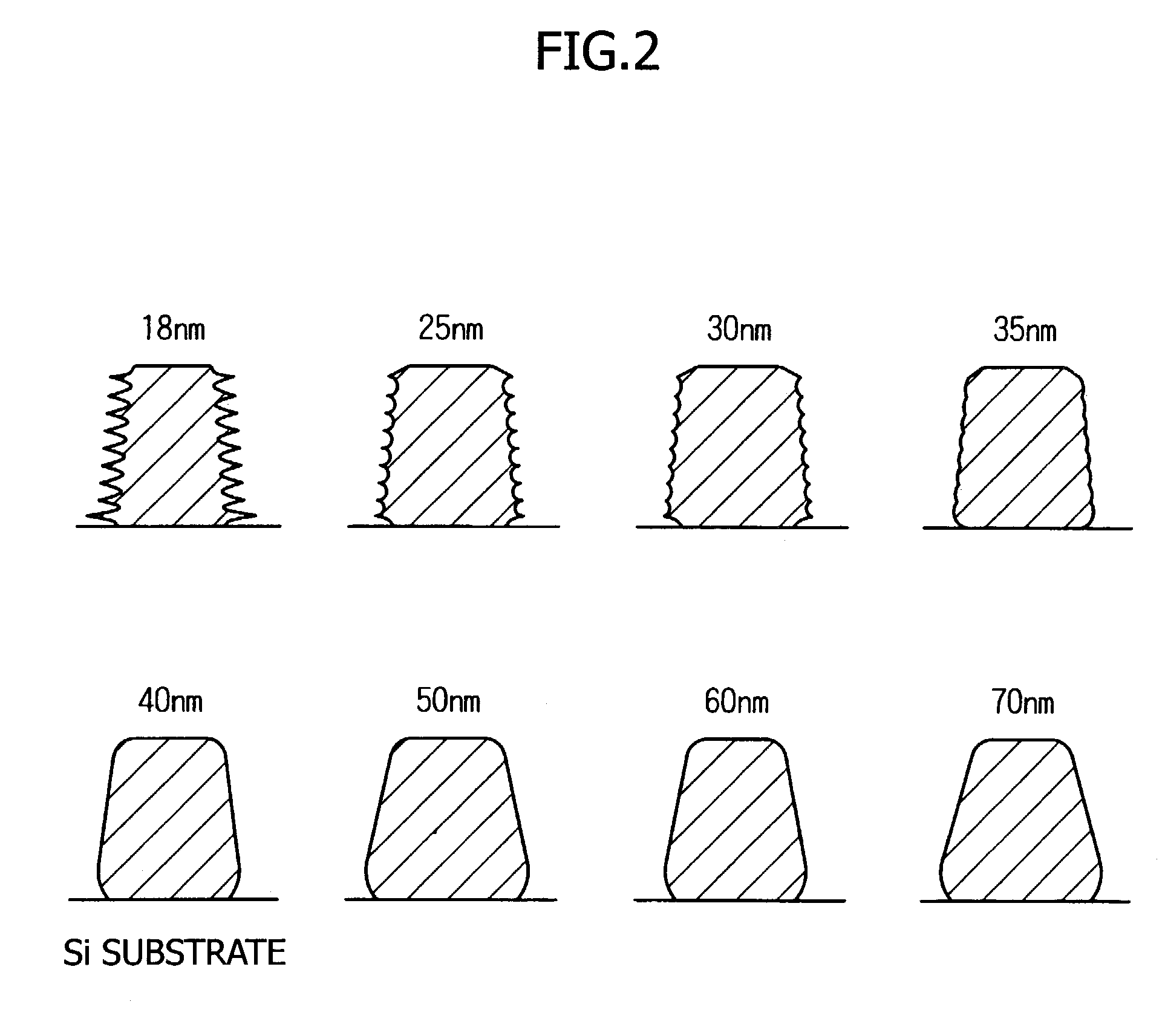Photo acid generator, chemical amplification resist material and pattern formation method
a chemical amplification resist and generator technology, applied in the direction of photosensitive materials, instruments, photomechanical equipment, etc., can solve the problems of low sensitivity, deficiency in heat stability and storage stability, and insufficient acid generation efficiency, etc., and achieve the effect of sufficient resolution
- Summary
- Abstract
- Description
- Claims
- Application Information
AI Technical Summary
Benefits of technology
Problems solved by technology
Method used
Image
Examples
synthesis example 1
Synthesis of the Following Compound (syn-1)
[0162]
[0163]Ten grams (0.05 mol) of α-bromoacetophenone was dissolved in 30 g of nitromethane, and to this was added 5.2 g (0.05 mol) of 1,4-thioxane, and the mixture was stirred at room temperature for 24 hours. To the reaction solution were added 100 g of water and 100 g of diethyl ether to cause liquid separation. To the aqueous phase was added 16.9 g (0.05 mol) of potassium nonafluoro-n-butanesulfonate and 200 g of dichloromethane and the resulting aqueous mixture was stirred. The separated organic phase was washed with 200 g of water, and the solvent was removed by a rotary evaporator. To the resulted oily substance was added diethyl ether to cause re-crystallization. The crystal was filtrated under suction, washed with diethyl ether, and then dried under reduced pressure. The data of nuclear magnetic resonance (NMR) spectrum and infrared (IR) spectrum and time-of-flight mass spectrometry (TOFMS) of the intended substance obtained at a...
synthesis example 2
Synthesis of Sodium 4-(4′-methylphenylsulfonyloxy)benzenesulfonate
[0167]The intended sodium sulfonate was synthesized by using 4-phenolsulfonic acid hydrate and p-toluenesulfonyl chloride in a solvent mixture of tetrahydroguran and water, while dropping an aqueous sodium hydroxide solution, with reference to the synthesis method described in Japanese Patent Provisional Publication No. 2001-122850 (U.S. Pat. No. 6,440,634).
synthesis example 3
Synthesis of the Following Compound 3 (syn-3)
[0168]
[0169]The intended substance was synthesized in the same manner as in Synthesis Example 1 except that 17.5 g (0.05 mol) of sodium 4-(4′-methylphenylsulfonyloxy)benzenesulfonate obtained in Synthesis Example 2 was used in the place of potassium nonafluoro-n-butanesulfonate used in Synthesis Example 1. The data of nuclear magnetic resonance (NMR) spectrum and infrared (IR) spectrum and time-of-flight mass spectrometry (TOFMS) of the intended substance obtained at a yield of 2.0 g (yield: 7%) are shown below.
[0170](1HNMR(CD3OD); ppm) 2.42(3H, s, Hg), 3.35–3.46(2H, m, Ha), 3.63–3.74(2H, m, Ha′), 4.03–4.12(2H, m, Hb), 4.26–4.36(2H, m, Hb′), 4.84(2H, s, Hc), 6.95–6.97(2H, d, Hj), 7.46–7.48(2H, d, Hh), 7.55–7.57(2H, d, Hi), 7.59–7.64(2H, t, He), 7.72–7.79(3H, m, Hf, Hk), 8.00–8.02(2H, d, Hd). (IR; cm−1) 1678, 1599, 1486, 1454, 1378, 1353, 1332, 1305, 1254, 1221, 1165, 1133, 1103, 1051, 1033, 1016, 1012, 991, 872, 858, 848, 753, 686, 659, 6...
PUM
| Property | Measurement | Unit |
|---|---|---|
| wavelength | aaaaa | aaaaa |
| wavelength | aaaaa | aaaaa |
| wavelength | aaaaa | aaaaa |
Abstract
Description
Claims
Application Information
 Login to View More
Login to View More - R&D
- Intellectual Property
- Life Sciences
- Materials
- Tech Scout
- Unparalleled Data Quality
- Higher Quality Content
- 60% Fewer Hallucinations
Browse by: Latest US Patents, China's latest patents, Technical Efficacy Thesaurus, Application Domain, Technology Topic, Popular Technical Reports.
© 2025 PatSnap. All rights reserved.Legal|Privacy policy|Modern Slavery Act Transparency Statement|Sitemap|About US| Contact US: help@patsnap.com



